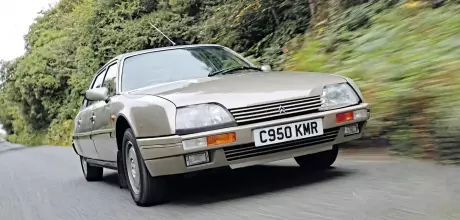1986 Citroën CX II Prestige Automatic
Citroën’s spaceship for the road still has the ability to astonish with its cleverness and complexity, 50 years after it was launched.
FIVE CLASSIC TRIALS 1986 CITROËN CX II PRESTIGE
Citroën has previous when it comes to surprising the world with out-there engineering. It did so with its Traction Avant in 1934, repeated the trick with the 2CV in 1948 and created an even bigger stir with the DS in 1955. So perhaps the world shouldn’t have been too surprised that the CX was just as extraordinary as its predecessors when Citroën unleashed it half a century ago. Designed to replace the DS, the CX built upon that model’s already advanced spec with improved super-smooth hydropneumatic selflevelling suspension, VariPower assisted and self-centring steering and spaceship-like sleek looks complemented by an interior that was just as futuristic. It was utterly, indisputably, inexorably a Citroën.
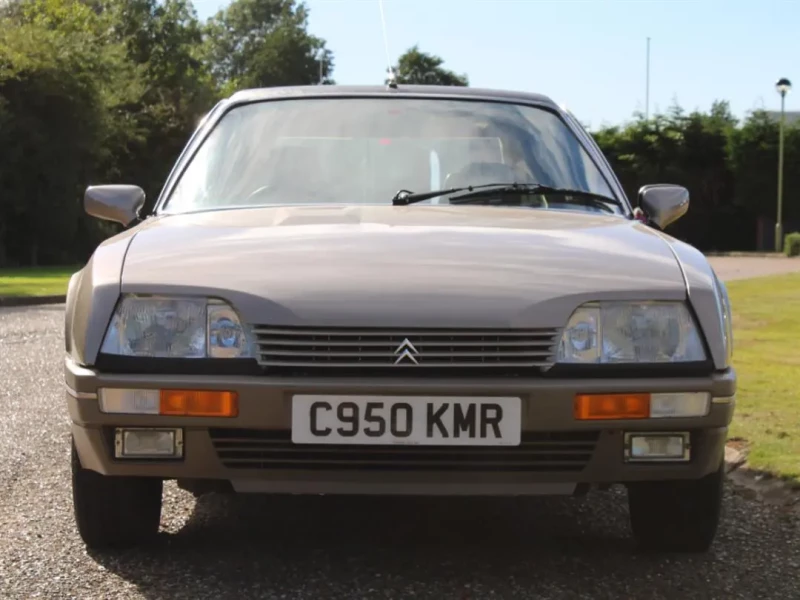
Our test vehicle here comes from the CX’s later years, after the progression to Series II form. The chrome bumpers were now plastic, there were changes of exterior trim and the revamped interior was a little more conventional – but not so much that Ford owners would feel completely at home. ‘Ours’ is even more special than because it’s the long wheelbase ultra-executive Prestige model with a wheelbase that’s eight inches longer and sumptuous leather upholstery.
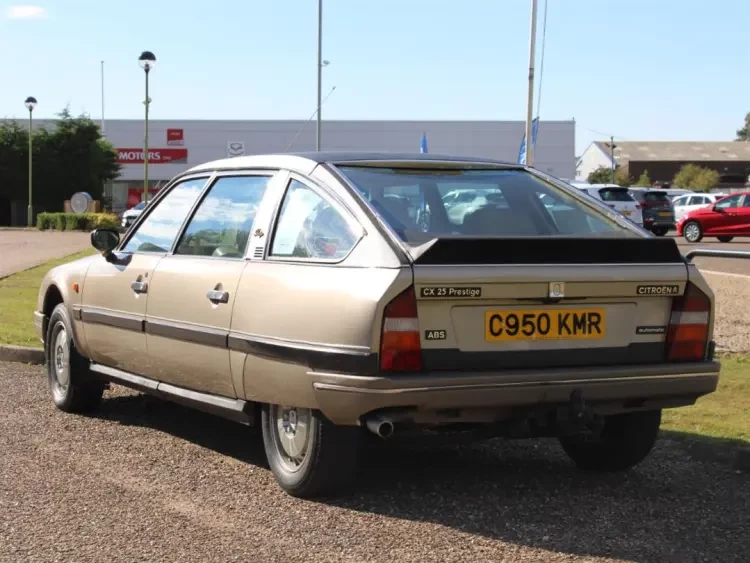
You can’t enter a CX without first admiring its Robert Opron design; no, really, you can’t, because the shape is so sleek, svelte and stunning that it’s impossible to ignore. Being so low to the ground – at rest, of course… the CX sinks to its minimum suspension setting barely inches above the Tarmac – it genuinely looks like something from another planet, albeit one where they like lots of gold and black vinyl. There’s barely anything visible of the rear wheels behind their spats. Of course, this means you also have to lower yourself considerably to get in. But there’s an almost absurd amount of space to stretch out in once you’ve settled in the squeaky leather seats, whether up front or in the back. The dashboard and controls are mesmerising.
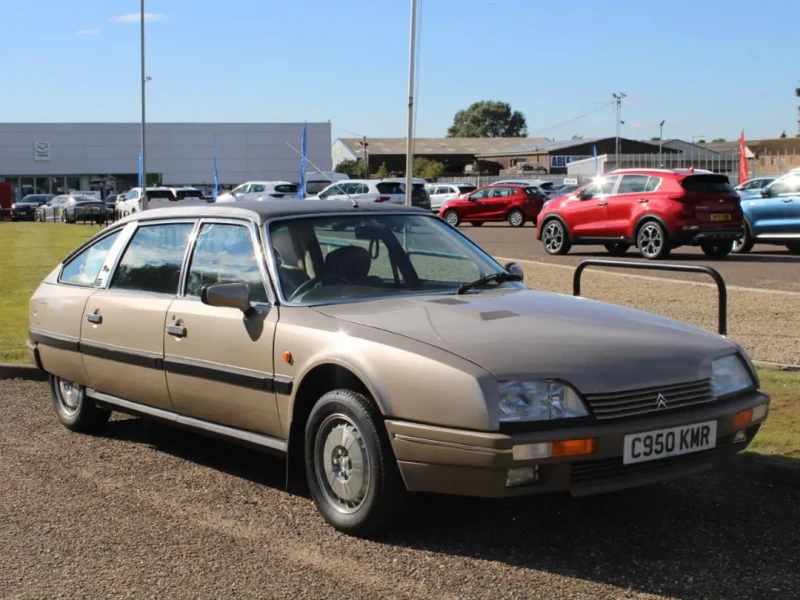
And quite, quite mad, too, though not quite as outright crazy as the Series I’s rotating drum gauges. Series II CXs have conventional clock-type gauges but the paddle-type controls clustered around the binnacle beyond the single-spoke steering wheel, and the radio mounted face-up alongside the handbrake are still proof that Citroën didn’t compromise the car’s eccentricities too much for its mid-Eighties facelift.
Fire most cars up and any drama is generally from the sound of the engine. The Prestige’s generous soundproofing suppresses that but instead the spaceship analogy is reinforced by the hydropneumatic suspension raising itself to proper ride height with gentle shudders front and rear. You don’t just take off horizontally in one of these Citroëns; there’s vertical take-off and landing, too.
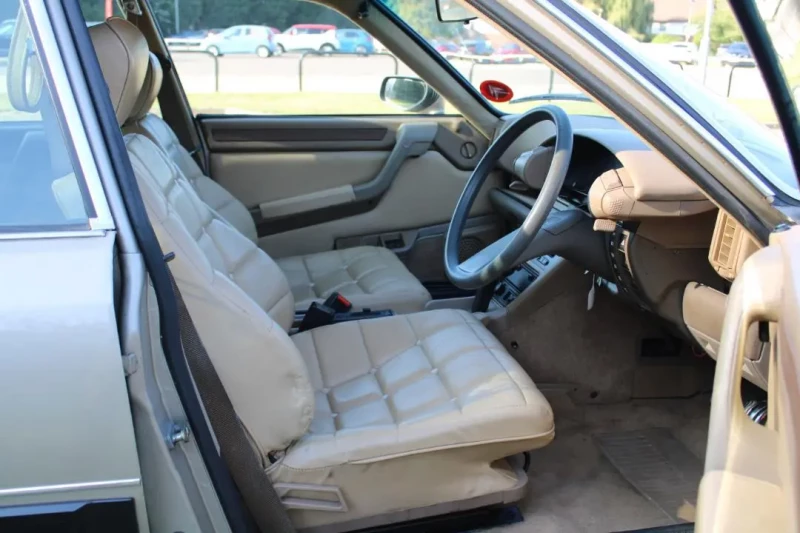
Once you’re underway the CX’s ride is as world-class as ever; it just absorbs bumps like a sponge. The steering, with varying levels of pressure depending on the speed plus its self-centring function and artificial feel, can take new drivers by surprise, resulting in jerky movements out of character with the car. But once you’ve acclimatised to such things, the Prestige can be hustled around bends very effectively and accurately albeit with a predilection for understeer. The brakes require familiarisation, too, because they are so shockingly sharp. Your first few applications will be violent, juddering halts until you’re in the mindset that the pedal is more of a switch than a progressive control. Still, for those seeking a bit of familiarity, at least the automatic gear selector behaves as you’d expect. Which almost feels like an anticlimax.

The French have a well-known saying, ‘Vive la différence’. The Citroën CX illustrates exactly what that stands for in a way that few other classic cars can even come close to.
FIVE TRIALS
We enjoy the Citroën CX II Prestige and put it fully to the test
1 DAILY DRIVING
While the idea of using a very complex limousine for commuting might seem intimidating, it’s certainly well within the Prestige’s remit – although having a spare vehicle in reserve might be handy so you can keep on top of maintenance. A CX is a joy to slope around town because so much of it is hydraulically controlled, with the varying self-centring steering actually a boon for tight 90-degree turns, while the ultra-sharp brakes are superb protection against urban hazards. All-round visibility is excellent thanks to those slim roof pillars and back spoiler to aid reversing. Of course, it is a lengthy car to fit into a parking spot, but no worse than many of the monstrous modern SUVs that increasingly choke today’s streets.
2 IN THE SERVICE BAY
CXs are often regarded with suspicion because of their hydropneumatic system but it’s actually all pretty straightforward stuff and, for the most part, quite accessible, too. For example the spark plugs are right at the front and top of the transverse engine. So, those scary hydraulics then. The system of six spheres (two each end of the car plus two accumulator spheres) is relatively reliable if well-maintained and recharged when necessary but a proper specialist is the best option if work does need doing to it. Also bear in mind that a CX will sink to its lowest height should it break down and become a devil of a recovery job. And this writer speaks from bitter personal experience…
3 ON THE SHOW CIRCUIT
The last CXs were built 31 years ago, which is enough to secure them access to most classic car events that don’t have a strict age limit. All variants are acknowledged as bona fide classics, although be prepared for the general public to go more gaga over any adjacent DSs (because a DS trumps anything) or 2CVs (because Tin Snails just charm everybody) if you’re exhibiting as part of a Citroën display. The CX was such an advanced shape for 1974 that it still looks quite modern today, especially in Series II form. But let any showgoers get a gander at the fascinating interior and they’ll be absolutely hooked and want to stick around to watch the suspension perform its party tricks.
4 THE LONG WEEKEND
The Prestige gives and takes here. All CXs are comfortable cruisers with cossetting, soft seats designed to pamper; the buttoned-down leather ones in this car are especially luxurious, albeit intended for four people rather than the five you can fit courtesy of the rear bench on a more ordinary version. The extended wheelbase means that the Prestige ensures generous legroom for everybody, front and back. Luggage accommodation is large, but while the car’s fastback shape suggests that it’s a hatchback, Citroën gave it a boot lid instead, just as it did with the smaller GS. The opening is almost irritatingly small, limits the size of what can go in and makes it gymnastically challenging to retrieve anything right at the back. The selflevelling suspension does cope well with even the heaviest of loads, though.
5 THE B-ROAD BLAST
B-roads give the CX the chance to really demonstrate its expertise. For starters, there’s the ride. On routes where potholes and rough surfaces are generally the rule rather than the exception, only the most severe provoke anything more than a light shudder. The front-drive handling is similarly adept, although it takes some familiarity with the self-centring steering to get the best from a car that feels so different from more conventional machines. There’s considerable body roll but the CX nevertheless clings on relentlessly when pushed, albeit with a tendency to understeer. The brakes’ on/off nature also requires some getting used to, and their sharpness during bends isn’t advisable, but there’s little better in the classic car world for bleeding off speed on the approach.
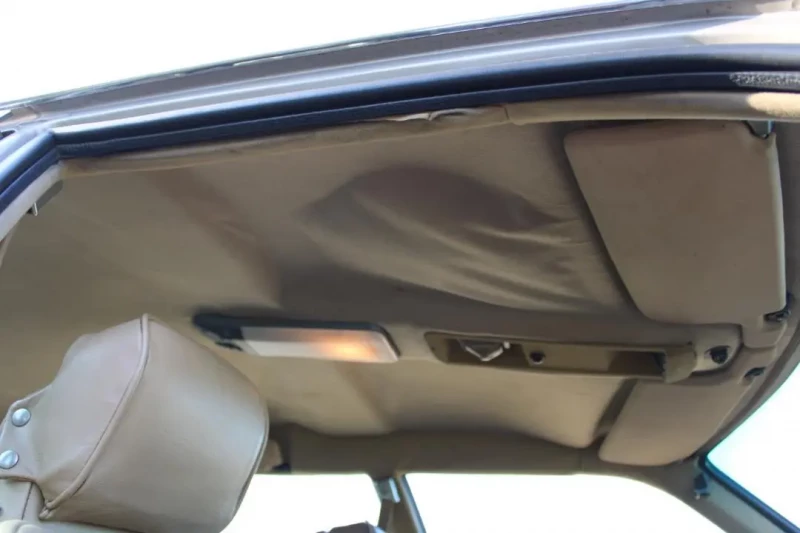
Buying tips
1 SEE HOW IT RUNS
The 2.5-litre cars have engines derived from the previous DS. These units have an enviable reputation for longevity, with more than 250,000 miles possible with care. Listen for worrying noises or rattles from deep within the unit, look for smoke and be wary of evidence of excessive oil leaks.
2 WATCH OUT FOR ROT
Check for corrosion around the front wings, rear wheel arch lips and rear box sections. The bases of the windscreen pillars are also critical and difficult to repair if too far gone. Door bottoms, the front edge of the bonnet, floorpans and outer sills are vulnerable, too.
3 CHECK THE FLUID
LHM fluid should be bright green and the car should take around 15 seconds to rise to full ride height when switched on. A constant clicking from the belt-driven pump means that the accumulator sphere needs to be replaced. Leaning rear wheels and creaking when driving suggest that the rear suspension arm bearings have failed.
4 LOOK FOR TIRED TRIM
Early cars had very flimsy trim; it improved on Series IIs but still go for the best interior that you can find because finding replacements can be difficult. Look for electrical issues – especially on cars with central LCD digital displays – but other problems are often as a result of bad earths.
The CX looks absolutely in its element at speed and provides a smooth, unruffled ride over everything but the very choppiest of surfaces. CX’s distinctive concave rear window is designed to clear rain from the glass without the need for a wiper.
Buttoned-down leather seats are generous in the extreme and extremely soft and comfortable but don’t offer a great deal of lateral support.
The spare wheel under the bonnet frees up valuable boot space. All CXs had four-cylinder engines though the bay was designed to accommodate a rotary engine.
CX timeline
- 1974 - The Citroën CX is launched at the 1974 Paris Motor Show during October. Its advanced engineering and styling secures it the European Car of the Year award.
- 1975 - Sales in right-hand-drive territories, including the UK, begin. The flagship Prestige is introduced, with a longer wheelbase. The ‘Haute Protection’ version offers armourplating, too.
- 1976 - Citroën’s first ever diesel car, the CX2200D, puts out a meagre 66bhp. The first GTi the following year, with its 2.4-litre fuel-injected engine making 128bhp, is rather sprightlier.
- 1985 - The high-performance 168bhp CX 25 GTi Turbo makes its debut. Shortly afterwards, the CX is revamped into the Series II range with wraparound plastic bumpers and a re-worked interior.
- 1989 - The advent of the XM sees the CX saloon discontinued, although estates continue to be coachbuilt by Heuliez until 1991, when the XM estate belatedly arrives.
TECHNICAL DATA 1986 Citroën CX II Prestige Automatic
- ENGINE 2500cc/4-cyl/OHV M666
- MAX POWER 136bhp @ 6000rpm
- MAX TORQUE 151lb ft @ 4000rpm
- MAXIMUM SPEED 124mph
- ACCELERATION 0-60MPH 10.0sec
- FUEL CONSUMPTION 23-32mpg
- TRANSMISSION FWD, three-speed automatic ZF 3HP


